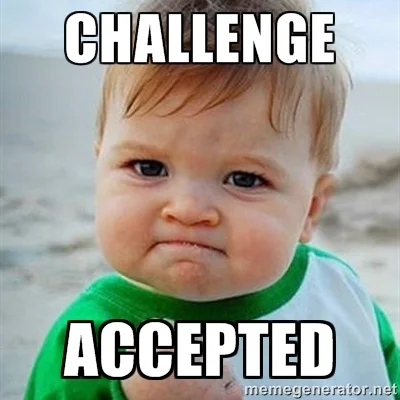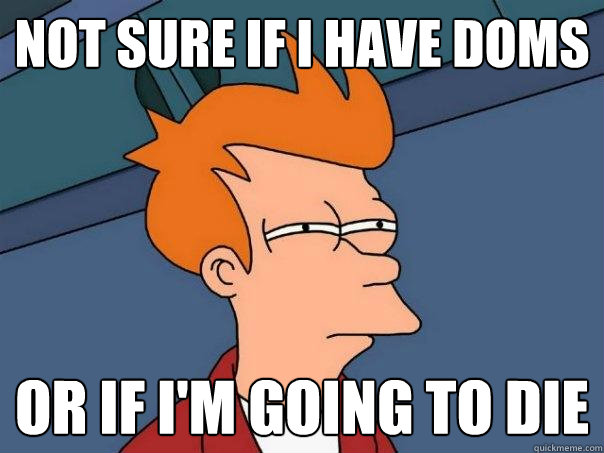The law of diminishing returns in fitness
Before we get into the 'meat and potatoes' of this article, I just wanted to outline something.
In the fitness game there is a payoff. You put in work and you get rewarded, with results.
Over time however, this payoff becomes less and less. The more experienced you become, the more challenging it is to see big, noticeable changes, or results.
This is known as the law of diminishing returns.
So, what is 'the law of diminishing returns'? Google defines this as;
Essentially, it is the return you get from an investment (eating well, exercising and recovering). But over time, the return on your training and eating investment slows down/diminishes.
Nutrition + Training = Results
Over time, the amount of results you see will gradually start to slow down.
'Fitness does NOT get easier over time'. I've spoken about this before (during this article).
Well, that should be the case if you are chasing the goals of;
- Increasing strength
- Improving your fitness
- Decreasing body-weight/reducing body-fat
The reasons for this are that the body needs to be stressed, beyond its current capabilities in order to adapt to a stronger, faster and more efficient organism.
Now, the way that you achieve this end-result is by training inefficiently.
To get stronger, you need to continually challenge the body.
You can't continue lifting the same weights, performing the same sets and reps AND think you will get any stronger.
The same thing for 'cardio' work. You can't stick to running the same distance, the same incline and at the same speed. That won't yield any noticeable results...
Now, the premise of this article is to show you, in a sense, the life-cycle of a trainee (Someone who exercises, regularly).
There would be 3 main stages, or evolution of a trainee. Those being;
- Novice (New to training, <12 months)
- Intermediate (Consistent training, 1-3 years)
- Advanced (Various styles of training, consistently for 3+ years)
Now, these stages aren't set in stone! they are merely guides.
What I will say is, that depending on your ability level, genetics and most importantly, level of consistent effort. You can either speed up, or slow down this
process.
NOVICE
For new, or 'novice' trainees, you could do just about anything and it will get some form of results. This is essentially taking you from 0-10km/h. There's a lot left in the tank, but you're just getting started, so to speak.
Basically, it doesn't really matter what you do, it could be walking and it would get results.
This is because walking is 'new' to the body and it isn't accustomed to this training, or stimulus.
For anyone who may be new to training. Do you remember your first workout or training session you did?
How sore did you feel the next few days following that bout of exercise!
Excruciatingly sore. Struggling to walk. Difficulty bending your arms. Or maybe you were in agony if someone made you laugh.
That is a very normal response to a new training stimulus. It is a foreign feeling and sensation to the body, because it's never had to do it before (exercise).
You get the picture, if you have been training for less than 12 months, you don't need a whole lot of training variation. You just need to be consistent!
Hit the basics, do them well and do them often.
This will build the foundation for many more fruitful and (hopefully) injury-free years of exercise.
INTERMEDIATE
If you have managed to stay consistent with training for over a year, you would start to transition into an intermediate trainee.
You've maybe dabbled in a few different styles of training and/or overload techniques. Things like super-sets, circuits, variations of the basic movements and so forth.
This is when things can get a little more exciting. But, also challenging.
Around the year mark you may continue seeing steady results and progress, which is fantastic!
There will be a time though, when you struggle to continue making gains.
- Your strength levels don't go up as quickly
- The weight isn't dropping as quickly off the scales
- Your speed when running, (per/km) isn't lowering as fast as you'd like
- There might be a few little niggles and injuries creeping in
If you have experienced any of these before, I'll explain why this occurred.
After a period of time, your body will start to adapt. It will get used to the speed you run at. It will build your muscles bigger/stronger to handle those heavier weights. It will also start becoming more efficient and start holding on to fat. Making weight-loss more and more difficult.
To get stronger, you will NEED to lift heavier and heavier weights.
'Try' not to feel bummed out about this. It's just part and parcel of the process.
If you can get to grips with this and understand what you can do to combat this, you will continue to get great results.
In terms of getting results, you need to train inefficiently. This means working harder than you did last session.
- Lift an extra few kilos.
- Perform a few extra reps.
- Do an extra set.
- Run an extra few hundred metres OR run faster.
Stuff like that.
I'm talking about 1% improvements here! These small, measurable --but most importantly-- realistic and achievable goals are the key to continued progress.
There are lots of ways to stimulate progress, like I outlined above.
What you can also do is alter or modify any of the following parameters;
- Change the angle of work (Incline, decline, flat)
- Vary your grip (Supinated, pronated, neutral)
- Alter your stance (Kneeling, Half-kneeling, Tall-kneeling, standing, supine, prone, lateral, offset, split)
- Use a different implement or training tool (Dumbbell, barbell, kettlebell, bands, cables, machines, body-weight, chains)
There you have a plethora of training variables that you can tinker with and change to spice up your training. Sometimes going from a barbell to a dumbbell is all you need!
If you've never used Kettlebells before, then that becomes 'new' for the body and will have to learn the tool and how it affects the muscles and joints. Therefore, new progress will follow.
Just a few implements you could use. From L to R
Slam Ball, Sandbag, Kettlebells and rope
You get the picture!
Now you've got a grasp on the intermediate side of a trainee, let's take a look at where the advanced trainees come in.
ADVANCED
To get to this stage of the training continuum you would need to have trained fairly consistently for 3+ years. Once again, it's not set in stone.
But, this shows you have gone through the proper progressions (hopefully), used various training implements and tried different training styles throughout your 'training life'.
Advanced trainees also start understanding the power of small changes and how they can affect the body and the results that will be achieved by changing the training program.
Hopefully, you will also develop awareness of effort and how hard training needs to be, to continue seeing progress.
When you are a novice, (and even intermediate -- to a point) you can get away with training at a reasonably low intensity and still see some results. As your training age increases, the level of intensity will gradually need to increase, too.
Now, if you are an experienced lifter or trainee, this does NOT need to be every single session.
It may just mean your conditioning, or interval component goes up a notch or two. Or you add in a 'finisher' set here and there.
NOTE- Please don't mistake this for longer training sessions, but more intense. The difficulty goes up when it's 'go time'.
Advanced trainees will also need to become very proactive and plan training to reduce the law of diminishing returns.
This may include things like different training programs, such as;
- Upper-lower
- 3/4/5-day training splits
- Powerlifting
- Heart-rate range training
And so on.
So there becomes more of an emphasis on smart planning and decision-making.
"Will this program help me continue to make progress", Yes or No?
Ok. We've now established that training needs to evolve and become slightly more complex and advanced as time goes on.
If however, you aren't skilled in this area, or don't don't know the next suitable progression, a good coach can help take a lot of the guesswork out of this. Don't feel like you have to guess, or make it up. Make sure your next step will move you forward!
"If you don't know, you don't know".
Now, let's talk nutrition!
If you are able to get results by reducing your coca-cola intake by 2 cans a day, to 1 can a day. There will be a time where that won't work any longer.
Perhaps it has to adapt to one every other day.
Then one p/week.
You see the progression?
As your body gets used to something, you need to challenge it.
Now, this does NOT mean continue cutting calories. No, no, no!
Eat less, exercise more is a very flawed approach. You can learn more about that HERE.
What you would ideally look to do is improve your food choices.
Rather than eating 'less', try eating better.
Instead of that Kit-Kat, or Mars bar, why not have an energy ball? Or a clenched handful of nuts and a piece of fruit?
If you aren't quite at the advanced level, but you aspire to get there, please don't feel like you have to pick up 3 books and start cramming this information.
When you become consistent, read about this stuff on a regular basis and put it into practice, your knowledge level will GRADUALLY increase.
Just like your strength and fitness levels!
Aim to get better by 1 percent each and every day.
Learn, try and experiment.
Don't know if something will work? Try it out.
- If it works, fantastic!
- If it doesn't, you now know you are a bit closer to finding something that WILL WORK.
I hope this informative article has given you some tips on how to continue seeing results and also identify what part of the training continuum you are currently on.
If you enjoyed this article and want to receive more information like this on a weekly basis, sign up to our weekly newsletter. This gets sent out each and every Tuesday.
Until next time,
Get 1% better, today.
Jesse
DO YOU LIKE MY ARTICLES AND FITNESS TIPS?
I send out my weekly newsletter, 'Fitness Advice That Works In the Real World', every Tuesday to help people like you, lose fat, build strength and create results that last.
Check it out here.






